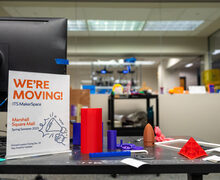‘No Emoji for Ennui’ questions the cost of utopia in new Light Work exhibit
Anthony Bailey | Asst. Digital Editor
Lana Caplan and Matt Whitman are two artists who have their work featured in “No Emoji for Ennui.”
Get the latest Syracuse news delivered right to your inbox.
Subscribe to our newsletter here.
Lana Z Caplan remembers 2018 very well, in every frustrating and confusing detail.
“Everything was just a barrage of negativity all the time … so everyone has this constant necessity to kind of self-regulate and find a balance amongst the enormous kind of chaos of our life,” Caplan said.
This state of constant self-regulation and searching for balance led to the creation of Caplan’s 2019 film “Autopoiesis,” one of five films that will be a part of Light Work’s Urban Video Project “No Emoji for Ennui.” The exhibition delves into themes like the ones Caplan explores: frustration at a world oversaturated with technology and the apathy that comes from attempting to show emotion from behind a screen.
Along with Caplan’s work, films from Matt Whitman, Ross Meckfessel and Alison Nguyen will make up “No Emoji for Ennui.” From Jan. 27 until March 26, the films will be projected onto the Everson, starting with Caplan’s work. On Feb. 24, a screening of all the films will take place in the Shaffer Art Building’s Shemin Auditorium.
In 2009, Light Work assumed programming responsibility for the Urban Video Project, which collaborates with the Everson Museum of Art to bring films and artists to Syracuse. UVP works are projected onto the north facade of the Everson — designed by I.M. Pei — since it has a 16:9 aspect ratio, the same as HD video.
The goal of the UVP is to support underrepresented artists that work in fields like experimental film, video art and other electronic mediums, said Anneka Herre, the director of UVP and an instructor in the department of film and media arts at Syracuse University. Herre said she hopes the different mediums within “No Emoji for Ennui” can help project a widely held concern in an unexpected way.
“(The exhibit is) at that kind of cutting edge where people, when they encounter it, aren’t going to know quite what to do with it,” Herre said. “That will always be important, that pushing of the envelope, formally or in terms of the content. (It) will always be an aspect of experimental film.”
In “Autopoiesis,” Caplan questions the cost of a utopia, a concept that she said can never be achieved, by synthesizing a variety of content, including screen recordings of a hypnotism video, video games and clips of athletes. Much of the film came from screen recordings Caplan made, including of skiers in the 2018 PyeongChang Olympics. Caplan — an assistant professor at California Polytechnic State University, San Luis Obispo — uses the film to comb through a number of themes, including utopia, hashtag activism and nationalism.
Whitman is also be one of the artists to have work featured in “No Emoji for Ennui,” with two of their Super 8 films, “HOW MUCH LONGER (ON BALLOONS)” and “CAN’T ANSWER YOU ANYMORE (ON FACES)” being a part of the exhibition.
Whitman said they became inspired to create these works after the 2010s left him emotionally exhausted due to dealing with the loss of many close friends and family members. They became fascinated with how humans had replaced complex and nuanced emotions like grief or anger with emojis that could not possibly relate to the complexity of those emotions.
“The perverseness of that — like, I’m just gonna click and ‘Okay, now I’m like I’m sad. I’m grieving with you’ ‘click’ — and just how weird that felt. But normalized, too,” Whitman said.
Whitman’s work aligns with the title of “No Emoji for Ennui” as he takes a critical look at the use of emojis and function in our society through their work.
“Behind each of those emojis is like a human, you know, a human face, a human emotion and a complexity that isn’t addressed in the symbol itself,” Whitman said. “But in considering how we can find languages and syntax that maybe is even more equitable than text-based writing in some instances.
Published on January 31, 2022 at 11:25 pm






